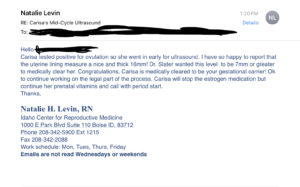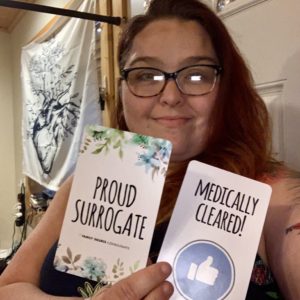Author Archive
Frequently asked questions
What is a midwife?
Midwives are what I like to believe to be birth guardians. They specializing in pregnancy & childbirth. They develop a trusting relationship with the ones on their path, which results in confident, supported labor & birth. While there are different types of midwives practicing in various settings, all midwives are trained to provide comprehensive prenatal care & education, watch over labor & birth, address complications, & care for newborns. Many midwives also provide preconception care & routine well-body reproductive care throughout the life cycle.
The Midwifery Model of Care is a fundamentally different approach to pregnancy & childbirth than contemporary obstetrics.
Our model of care includes:
- Monitoring the physical, psychological & social well-being of the birthing parent throughout the childbearing cycle
- Providing the birth parent & family with individualized education, counseling, & prenatal care, continuous hands-on or hands -off care (depending on the birthing person’s preference) during labor & delivery, & postpartum support
- Minimizing technological interventions
- Identifying & referring individuals who require obstetrical attention.
Is homebirth safe?
Homebirth is a safe option for pregnant people whose pregnancies are without complications & are full-term at the start of labor when monitored & attended by professional midwives. For some babies & parents who are at higher risk for complications, a hospital birth is a safer option.
Can I have a water birth?
Yes! Waterbirth is a lovely option for those who desire it. Many families choose to have birth tubs for comfort in labor, regardless of whether the family plans to have the baby in or out of the water.
Does insurance cover midwifery care?
Possibly, but not well. Often, health shares companies will reimburse for midwifery services with stipulations. Most people will have to pay out-of-pocket then send to be reimbursed. We offer payment plans and cash pay discounts.
Can I have friends & family at my birth?
Yes! We truly appreciate the presence of loved ones who bring positivity & their love for you into your birthing space. We can also offer support for setting boundaries when you desire privacy.
What about the mess?
We aim to leave the house as clean as it was when we arrived! During your pregnancy we will give you a link to a website where you will order a “birth kit” which includes all the disposable supplies for your birth. Many of these supplies are meant to keep your house clean during the birth. While you have family bonding time with your new baby, we quietly tidy up.
Can I have a VBAC (Vaginal Birth After Cesarean)?Most likely. Trying for a home VBAC has a high success rate – up to 87% – but there are some additional risk during labor, and some people are better candidates for home VBAC than others. Cesarean birth or other uterine surgeries leave a scar on the uterus, leaving some of the tissue weaker and slightly more prone to separating during labor. This is known as uterine rupture. The risk of uterine rupture is 0.2% if you have had one prior c-section, wait at least one year for your uterus to heal before becoming pregnant, have a low transverse incision, and your reason for the c-section does not necessitate another – like breech or failed labor induction. Additional c-sections, infections during healing, smoking, and possible anatomical reasons for c-section (ex: contracted pelvis) can increase your risk of uterine rupture.
We can discuss your prior birth experience and desire for VBAC during a free consultation. Unfortunately due to Louisiana midwifery laws, we are only able to offer home VBAC in Mississippi.
What do you do after the baby is born?
While every birth is a little different (depending on if you, your partner, your child, or your midwife catches your baby), at a typical birth we will wait for you to take your baby and bring them onto your stomach or chest, and we will keep a close eye on your bleeding and your baby’s adjustment to life outside the womb. After the placenta is born and the baby’s cord is done pulsing, we ask you if you are ready to cut the cord and who is going to be the one to do it, and we help clamp and cut the cord. Then we give you some space for family time, staying close by with an ear out for your needs and checking on you periodically. Whenever your baby is interested in nursing, we offer help with positioning and latch if you would like it. After a thorough newborn exam when your family is feeling comfortable and ready for a nap and we’re satisfied that you and baby are healthy and stable, we leave. Then your midwives will return in about 24-36 hours for your first postpartum visit.
What happens if something goes wrong?
Midwives are trained to handle certain complications at home and to know when a transport to the hospital may be necessary. One of the most common complications we handle at home is excessive bleeding from the uterus immediately after the baby is born, and we carry the same medications used in hospitals to stop the bleeding. The second most common complication in a homebirth is a baby who needs some help to take his or her first breaths. Every midwife at your birth is certified in neonatal resuscitation. Again, in this scenario, we follow the same standards as the hospital. Our most common reason for transporting a pregnant person to the hospital happens during a very long labor where the birth parent nears clinical exhaustion. In this case, the hospital can provide epidural and pitocin, which are the best tools to support sleep and enable a safe delivery.
Do I need to see a doctor for my prenatal care?
No, unless you would like to. Midwives provide the same clinical components as doctors during prenatal care, such as listening to the baby and taking your blood pressure. We get to know you and your health, and address all your questions. While it is not necessary to also receive prenatal care with a doctor, some families may feel more comfortable establishing a relationship with an obstetrician in addition to their midwife for backup or better insurance coverage of lab work and ultrasounds. There are also some instances when your midwife requests you follow up with a physician, such as antibiotic treatment of a UTI.
Who will attend my birth?
During the beginning of your labor, you will be with your midwife and anyone you invite to your birth. If your midwife is at your home for longer than 24 hours, we will switch out so you have a fresh, well rested midwife attending to you.
A student midwife may be present during your care and birth. We value and respect your desire to know who will be at your birth and strive to make sure you have a chance to meet your entire birth team before labor time.
What equipment do you bring with you to births?
Midwives are legally licensed to carry equipment and medications to safely manage normal deliveries at home, and we bring the same equipment to home births . Some of the equipment we bring includes:
- Monitoring equipment for you and your baby, including a doppler, blood pressure cuff and stethoscope, thermometer, and infant stethoscope.
- Supplies for the newborn exam and any newborn procedures that you choose, including a scale, measuring tape, erythromycin ointment, and vitamin K.
- Antihemorrhagic drugs to stop excessive postpartum bleeding.
- Resuscitation equipment for baby and birth parent: a bag and mask resuscitator and oxygen.
- Suturing equipment to do repairs if any tearing occurred, and lidocaine to numb for suturing.
What about ultrasounds and lab work?
We provide lab services: blood draws, urine tests, and infection swabs during regular appointments or in between if any concerns arise. We also provide referrals to medical imaging professionals in order to obtain ultrasounds as needed or desired. We are able to refer you to other professionals for additional testing if it becomes necessary.
What are the benefits of homebirth?
The latest research on planned home birth, released in 2014 by the Midwives Alliance of North America (MANA), found that among 17,000 families:
- Better outcomes for babies: 97% of babies were carried to full-term, and weighed an average of eight pounds at birth. Only 1% of babies were transferred to the hospital after birth, most for non-urgent conditions.
- Low rates of intervention: Only 4.5% of the 17,000 study participants required oxytocin augmentation and/or epidural analgesia. This is much lower than average for the United States, where 26% have oxytocin augmentation and 67% have epidurals.
- Low rates of cesarean birth: The 2014 MANA study also found that of the 17,000 planned home births, only 5.7% ended up birthing their babies via cesarean. This is compared to the national average of approximately 31% for full-term pregnancies.
- High VBAC success rate: For low-risk individuals, the chance of having a vaginal birth after cesarean ranges from 68-87% when birthing outside the hospital.
Other benefits of choosing home birth with midwives:
- Individualized care: All decisions about your care are made together with you. We will have thorough conversation about your needs, preferences, and values, your individual health, and the evidence regarding the options available to you. We respect you as the expert of your own body and your baby’s primary care provider.
- Continuity of care: Your midwife will follow you throughout the course of your prenatal, birth, and postpartum care. At every point in your parenting journey, you will see the familiar, comfortable, friendly face of your very own midwife.
- Evidence-based care: We stay current on the research around pregnancy, birth, postpartum, and breastfeeding so that we can provide up-to-date information to assist you in your decision-making.
- Your own environment: For many families, the comfort and security of your own home cannot be matched. You choose who attends your birth and who cares for you. You choose what to eat and drink. Walk, dance or sleep uninterrupted – it’s your birth!
- Incredible postpartum care: From the first minutes of your baby’s life to your six week postpartum checkup, We provides attentive, personal support and education necessary for your baby’s growth, help your family bond with your newborn, develop long-lasting breastfeeding or chestfeeding relationships, and heal your body in the postpartum.

Question and answers on Surragacy… if you have been wondered now is the time to ask…
In celebration 🎉 of Journey #2’s trip for Medical clearance next week…
Ask me ANYTHING about Surrogacy!
There’s no question too personal, and nothing outside the realm of what I will answer.
• I want to know what YOU want to know.
• I want to spread awareness & information.
• I want to answer your questions & possibly help you get started on a journey if you would like.
• Ever wondered but didn’t want to pry… Ask away… I’ll answer…
~~~~~~~~
• Why did I choose to become surrogate?
• Do we get paid?
• Is the baby genetically related to me?
• How could I ‘give’ it up?
• Did I know the intended parents before matching with them?
• Do I have to travel?
Nothing is too personal, so please, ask away.
From Facebook, Kari asks,
Is it emotionally difficult to give up baby to their parents after birth?
Do you breastfeed at all?
How do you feel surrogacy affects/differs in postpartum?
Good questions Kari!
Is it emotionally difficult to give up baby to their parents after birth?
As far as for me, it is one of the best feelings ever to watch the IPs (intended parents) meet their lil one for the first time and to help them establish that bond. To see the joy of not just a new life brought into this world but a new family being born. When they go home. It’s like the completion of an amazing journey. A fulfillment that can’t be measured.
We fostered for years and as Shay says when anybody ask her about it, “We are just babysitting the lil one for a few months until they meet up with their parents. The only difference is the lil one is inside mommy’s tummy instead of out and about here at the time. “
As far as the saying “give the baby up” I feel it’s not giving the baby up when in reality they were not mine to begin with. To me it feels similar to when I help a family though midwifery or fostering. It’s just on such an even more fulfilling and deeper level.
As far as my own kids reaction to the process they were excited. All 3 kids we have here at home were all totally fine with it. I was open about the process and clear I was just helping the baby grow so his parents could have him. They were all bigger kids at the time of delivery. They were, 14, 12, &10. They did researched on the whole process. It was very educational for them. We are open and honest with them about it all. They did get to meet him afterwards and thought he was the cutest. There are also some books to help explain it to kids. Mine were old enough and felt like it was totally a awesome thing to do. They were very understanding and compassionate.
With my previous journey we still keep in touch. Not only did their family grow but so did ours. Our two families will forever be bonded. We all formed not just amazing lasting friendships through the process but became like family. However, each case and person is different. Some IPs and surrogates may not want that kind of connection afterwards. Communication is discussed during matching. That way all parties are comfortable and their personalities mesh well. Everyone is on the same page as far as expectations and needs.
Do you breastfeed at all?
It really depends on the IPs and the surrogate. Every situation is different. If they decide to breastfeed the surrogate is paid and packaging and shipping is covered.
I didn’t get to with my last journey. They were out of country, with out of country shipping, IP decided not to go that direction. They were only here a very short time before heading back home.
Each journey is different. We haven’t discussed it yet for this next journey. I like to discuss it as if I would with a midwifery client. I lay out all the facts and then it’s up to them. They have that choice. I feel like it’s their path to evaluate the facts and make an informed decision based on their life and knowledge. I feel that just like I make the decision to breastfeed with my kids, its their right just like it was mine with my kids, to decide for themselves and their family.
How do you feel surrogacy affects/differs in postpartum?
As far as the effects on my body with the group decision of not breastfeeding, It was different. With us not breastfeeding 🤱 I didn’t have that immediate connection afterward. That golden hour for baby and my body. My body didn’t understand for the first little bit. Even though my mind knew and was ok with it. My mind understood it was not just my decision alone. It took my body a week or so to make that connection.
After that it was a normal postpartum recovery. But I mean what is normal anyway? Just a setting on the dryer? 🤷🏻♀️😁 Each pregnancy and birth is different. You know each birthing persons situation, body and mind set towards recovery is different. Depending on how they recover and the time they put into it. Resting is key, you know. Taking that time and space to allow your body to fully heal. The benefit here is in my case all my kids at home after the birth were not babies. They were half grown and didn’t need my 24/7 attention. This allowed me time to rest and recover. To give my body the space it needed to physically heal. But as far as recovery goes it was pretty basic C-section recovery. 😬😉💜

So, What exactly іѕ Dеltа-8-THC?

This small shift in the position of the double bond makes a significant difference in effects between delta-9 THC and delta–8 THC. According to Dr. Peter Grinspoon from Harvard Medical School, “People report [delta–8] as being less anxiety-provoking, less sedating, and a little more clear-headed than [regular] THC.
Delta-8-THC is a minor cannabinoid, occurring in the plant in very small concentrations. Delta-8-THC is also known to be a degraded form of delta 9 THC and is not directly produced by cannabinoid-synthesizing enzymes within the plant. When THC is stored for a period of time, it degrades into delta-8-THC. Commercial growers and extractors use selective breeding and molecular isolation to access greater quantities of delta-8-THC.
The Dіffеrеnсеѕ Bеtwееn Delta-8 and Dеltа-9 THC
Delta-8-THC is distinct from the THC that is often mentioned in conversation about cannabis. What we refer to as THC usually means delta-9-THC, the main form of THC found in cannabis. Delta-8-THC is an analog of delta-9-THC, a molecule with a similar structure, but some notable differences.
While the two share many similar properties, such as reportedly stimulating appetite, reducing nausea, and soothing pain, delta-8-THC tends to exhibit a lower psychotropic potency than delta-9-THC.
The main difference is that while delta-8 can do all of these things, it does them with less intensity. Even for experienced cannabis users, there is a noticeable effect, just a less intense one. However, the trade-off here is that the potential negative side effects of cannabis, such as anxiety and paranoia are also reduced. Delta-8 tends to be less racy, as mentioned, but what happens aside from the high?
The compound is even known to the National Cancer Institute, which notes that it has, “antiemetic, anxiolytic, appetite-stimulating, analgesic, and neuroprotective qualities.” It can be described as sort of a middle ground between hemp, CBD and THC-delta-9.
The Differences Between CBD & Delta-8
Although the chemical properties of CBD and Delta-Eight are comparable, they differ so much. The principle distinction between CBD and Delta-Eight is psychoactive results.
CBD doesn’t produce euphoric effects, however Delta-8 does. Given that Delta-8 is the little brother of Delta-9 THC, the result of using Delta-8-THC is a weaker psychoactive results than the typical THC impact.
What about that Euрhоrіс Effect?
Since CBD has undergone a number of studies, the well being advantages are confirmed. CBD has been reported to help induce sleep, stimulate the urge for food, handle anxiousness, scales back stress, reduces insomnia, enhances reminiscence, and pain relief.
Delta-Eight is touted to have somewhat comparable well being advantages as CBD, however if we are being honest with each other, most consumers use the product and most brand market the euphoric effects.
But is it legal?
CBD and all different byproducts of commercial hemp are authorized nationwide. It’s protected below the federal regulation known as the Agricultural Improvement Act of 2018.
So is Delta-8 authorized? YES! Delta-8 is federally authorized so long as the Delta -9 THC content material is lower than 0.3% and naturally derived from the hemp plant. If Delta-8 is derived from the marijuana plant and has 0.3% Delta-9 THC focus, it can now be thought-about a managed substance.
Ok well is it Safe?
CBD is widely considered to be safe for most healthy individuals given the on-going use by millions of people each day for the past several years. CBD is well-tolerated, however some do report uncomfortable side effects of dry mouth, drowsiness, diarrhea, and fatigue. Everyone should consult with their physician before starting a regiment of CBD.
Yeah it is Awesome, Where can I get it?
Understandably, CBD is widely available on-line, in CBD shops and other retailers, Delta-8 can be a bit harder to find. If you do seek out Delta-8-THC, be sure to buy it from a brand you trust and from a retailer that has lab tested products and will stand behind its products.
Delta 8 THC, Pregnancy & hyperemesis gravidarum?
Pregnant people can suffer from metabolic problems if they continue to suffer from nausea and vomiting. Vomiting the nutrients instead of consuming them is not good for pregnant people. And of course, this condition is very stressful and aggravating for the person. And stress is not good for the pregnant person or the baby.
It’s therefore important that pregnant people seek natural, effective and safe treatments for this condition. Take note that we are not promoting the use of cannabis by pregnant people. We are simply providing information to help guide users.
It’s still important to consult your midwife or doctor regarding cannabis use when you’re pregnant. Never take cannabis to ease vomiting, nausea and other symptoms without first consulting a midwife or doctor.
Cannabis strains may be stimulating and relaxing. Consider that strains with moderate amounts of THC at 19% to 20% may be very hard to deal with. A strain with high THC is a stimulating and psychoactive strain while those with high CBD are relaxing and therapeutic strain. THC and CBD balance each other out, therefore, a strain with high CBD may have lower or even close to absent THC and vice versa.
A hybrid is a cross of the two types. A hybrid has stimulating and at the same time depending on which strain (sativa or indica) is dominant in a strain. But no matter how stimulating or relaxing components in the strain these can cause mental changes to the user.
By analyzing studies spanning approximately three decades, they concluded the evidence does not support an association between prenatal cannabis exposure and clinically relevant cognitive deficits.
Published in the journal Frontiers in Psychology, the systematic review revealed that a vast majority of studies on this topic found no significant statistical differences between kids who were reportedly exposed to cannabis during pregnancy, and those who were not. Less than 5% of comparable studies in this area showed any statistical difference between children’s scores on cognitive tests; importantly, these included both slight dips and improvements in scores, and all but 0.3% of study results still fell in the normal range.
There is a difference between use and abuse. If someone is planning to use it, they should be encouraged conscious use; microdosing to treat the need without overusing. As always don’t take anyone else’s word for it. It is your own body. Do your own research and decide what is best for you and your baby. No one can make any decisions for you. It is your right to choose.
Doula… what’s that???
The word doula is a Greek word meaning women’s servant. They have been serving others in childbirth for many centuries and have proven that support from another’s has a positive impact on the labor process.
My partner is my left hand and my doula is my right. – from Doulas Making a Difference
What is a doula?A doula is a professional trained in childbirth who provides emotional, physical, and educational support to a birthing person who is expecting, is experiencing labor, or has recently given birth. The doula’s purpose is to help people have a safe, memorable, and empowering birthing experience.
Most often the term doula refers to the birth doula, or labor support companion. However, there are also antepartum doulas and postpartum doulas. Most of the following information relates to the labor doula. Doulas can also be referred to as labor companions, labor support specialists, labor support professionals, birth assistants, or labor assistants.
What does a doula do?Most doula-client relationships begin a few months before the baby is due. During this period, they develop a relationship in which the birthing person feels free to ask questions, express their fears and concerns, and take an active role in creating a birth plan.
Most doulas make themselves available to the birthing person by phone in order to respond to their questions or address any concerns that might arise during the course of the pregnancy. Doulas do not provide any type of medical care. However, they are knowledgeable in many medical aspects of labor and delivery.
As such, they can help their clients gain a better understanding of the procedures and possible complications in late pregnancy or delivery.
During delivery, doulas are in constant and close proximity to the birthing person. They have the ability to provide comfort with pain-relief techniques including breathing techniques, relaxation techniques, massage, and laboring positions. Doulas also encourage participation from the partner and offer reassurance.
A doula acts as an advocate for the birthing person, encouraging and helping them fulfill specific desires she might have for her birth. The goal of a doula is to help the birthing person experience a positive and safe birth, whether an un-medicated birth or a cesarean.
After the birth, many labor doulas will spend time helping birthing people begin the chestfeeding process and encouraging bonding between the new baby and other family members.
What are the benefits of having a doula?Numerous studies have documented the benefits of having a doula present during labor. A recent Cochrane Review, Continuous Support for Women During Childbirth, showed a very high number of positive birth outcomes when a doula was present. With the support of a doula, birthing people were less likely to have pain-relief medications administered and less likely to have a cesarean birth. birthing people also reported having a more positive childbirth experience.
Other studies have shown that having a doula as a member of the birth team decreases the overall cesarean rate by 50%, the length of labor by 25%, the use of oxytocin by 40%, and requests for an epidural by 60%.2
Doulas often use the power of touch and massage to reduce stress and anxiety during labor. According to physicians Marshal Klaus and John Kennell, massage helps stimulate the production of natural oxytocin. The pituitary gland secretes natural oxytocin to the bloodstream (causing uterine contractions) and to the brain (resulting in feelings of well-being and drowsiness, along with a higher pain threshold).
Historically it was thought that intravenous oxytocin does not cross from the bloodstream into the brain in substantial amounts and, therefore, does not provide the same psychological benefits as natural oxytocin. However, more recent studies indicate that oxytocin administered nasally and/or intravenously may cross from the bloodstream into the brain. Nonetheless, doulas can help mothers experience the benefits of oxytocin naturally without the use of medication.
Research shows parents who receive support often:
- Feel more secure and cared for
- Are more successful in adapting to new family dynamics
- Have greater success with chestfeeding
- Have greater self-confidence
- Have less postpartum depression
- Have lower incidence of abuse
- Lower incident of relapse in the first 6 weeks postpartum
The role of the doula is never to take the place of partners in labor, but rather to complement and enhance their experience. Today, more partners play an active role in the birth process. However, some partners prefer to enjoy the delivery without having to stand in as the labor coach.
By having a doula as a part of the birth team, a partner is free to do whatever he chooses. Doulas can encourage the partner to use comfort techniques and can step in if he wants a break. Having a doula allows the partner to support the birthing person emotionally during labor and birth and to also enjoy the experience without the added pressure of trying to remember everything he learned in childbirth class!
Are doulas only useful if planning an unmedicated birth?The presence of a doula can be beneficial no matter what type of birth you are planning. Many people report needing fewer interventions when they have a doula. But be aware that the primary role of the doula is to help birthing people have a safe and pleasant birth–not to help them choose the type of birth.
For people who have decided to have a medicated birth, the doula will provide emotional, informational, and physical support through labor and the administration of medications. Doulas work alongside medicated birthing people to help them deal with potential side effects. Doulas may also help with other needs where medication may be inadequate because even with medication, there is likely to be some degree of discomfort.
For a person facing a cesarean, a doula can be helpful by providing constant support and encouragement. Often a cesarean results from an unexpected situation leaving a birthing person feeling unprepared, disappointed, and lonely. A doula can be attentive to the person at all times throughout the cesarean, letting her know what is going on throughout the procedure. This can free the partner to attend to the baby and accompany the newborn to the nursery if there are complications.
What about other types of doulas?In addition to labor doulas, there are antepartum doulas and postpartum doulas.
Antepartum doulas provide support to a person who has been put on bed rest or is experiencing a high risk-pregnancy. They provide informational, emotional, physical, and practical support in circumstances that are often stressful, confusing, and emotionally draining.
Postpartum doulas provide support in the first weeks after birth. They provide informational support about feeding and caring for the baby. They provide physical support by cleaning, cooking meals, and filling in when a new parent needs a break. They provide emotional support by encouraging a person when they feel overwhelmed.
Some doulas have training in more than one area and are able to serve as more than one type of doula.
Finding a Doula:
The key to choosing a doula is to find a person with whom you feel comfortable. Most doulas do not charge for an initial consultation, so take the time to interview as many as necessary until you find a good match.
Questions to Ask a Potential Doula:
- What training have you had?
- What services do you provide?
- What are your fees?
- Are you available for my due date?
- What made you decide to become a doula?
- What is your philosophy regarding childbirth?
- Would you be available to meet with me before the birth to discuss my birth plan?
- What happens if for some reason you are not available at the time I give birth?
Next up… Uterine Lining Check… Officially Medically Cleared 🎉🎉🎉
Well, back in Carlsbad awaiting time for the US to check the thickness of my endometrial lining… the magic number is 7mm… Went in for the ultrasound on July 7, 2019. It didn’t exactly go as we wanted. Didn’t really hit that magic number. Missed it by 1.6 mm . No worries though, it’s all in the perfect timing. No worries at all, we are gonna try this one more time .
This time Dr. Slater added some Estrace for a lil boost. I also added some herbs and supplements I researched in my midwifery studies that can help out. I took a tea blend of red raspberry leaf, nettles, alfalfa, and oat straw, then took a few supplements like Vit E, B-12, omega 3, L-arginine, new chapter prenatals, and ate a ton of pineapple 🍍 and avocado. 🥑
Here we are again… I have been checking for ovulation with charting my cycle and body rhythm. Seems I am ovulating early. I let Natlie, Dr. Slater’s nurse know what was going on. She agreed that we needed to move up this months US. I had to miss my second day of clinical with my new apprenticeship. My preceptor was great and totally understanding. July 30th, 2019, road trip to Roswell, NM as the hospital in Carlsbad was already booked. As I sit there early that morning waiting to be called back… all the normal thoughts rushed through my mind… what if it didn’t work out… what if it’s still thin… Well, then it hit me.. no it’s going to all work out just how it’s suppose to. No need to worry because I know this is my path and a way will be made somehow…
Well the tech would not give me a number so I had to wait for the radiologist to read it and make out the report. Roswell is about an hour and a half from my house so I decided to wait for Natlie’s call. Around 1:30 pm the call did come… it was amazing… it was not only the number we needed but it went from 5.4 to 16mm in that time. It was beyond the magic number… we had medical clearance to proceed… That’s right, on the very last day of July, July 30th… we are officially medically cleared.. 🍍🥑 🎉 On to contracts, then start meds, then the big special day…. The journey continues on…
Officially Medically Cleared!!!🎉🎉🎉
Monitrice Services… just what is that anyway…
Difference between a the roll of a Monitrice and Doula…
A doula does not perform clinical tasks. A monitrice offers clinical judgement, where as a doula is not allowed too. Someone providing monitrice service is a nurse, midwife or midwife student. Someone with training in medical and midwifery care. However, once your Montrice gets to the hospital then they become the role of your doula. This is a wonderful option for women that would like to be monitored and labor at home as long as possible, but deliver in the hospital or birth center setting.
What does a Monitrice do?
Prenatal visits.
We will discuss your goals for labor and birth.
We will create a birth plan.
We will work on relaxation techniques, comfort positions, and holistic remedies for comfort.
We will discuss the role you would like your Montrice to play at your birth.
A basic over view of childbirth, and the postpartum period.
They will help assist you and your partner to make informed decisions.
They will be taking your vital signs, listen to heart tones, palpating baby’s position, and upon your request cervical checks (only at term and if requested).
24/7 on call beginning 4 weeks before your EDD, and 4 weeks after your birth. During Labor I will provide support, help your partner with comfort measures during labor and birth.
You can also rent a tub by request to labor at home in.
Postpartum visits.
Chest feeding support.
WHAT YOU CAN EXPECT:The scope of work for a monitrice is different from both doula and a midwife in the following ways:
- Monitrice Services are only to assess normal progress in labor; not for medical treatment or diagnosis. I do not offer medical advice or diagnosis.
- Monitrice Services are outside the scope and practice of Doulas.
- They will not act as your midwife. You still need a primary care provider.
- They can offer information and resources on non-allopathic treatments for a healthy pregnancy.
- They will attend your hospital or birth center birth as your doula, but cannot offer clinical support once there. Since they do not provide medical advice or diagnosis, they will not speak to the hospital staff about your medical care on your behalf.
- They provide emotional and physical support for you and other members of your birth team, as I do for all my doula clients.
Monitrice services include the following:
DURING PREGNANCY- Unlimited Email and Text support
- Meet with you 2-3 times to get to know you and your individual wants/needs.
- Provide herbal/nutritional counseling to help you keep your pregnancy low-risk.
- Be on call for you from 37 weeks gestation on.
- Access to the client portal of educational resources.
- Join you when you are ready for labor support at home as a monitrice and at the hospital as your doula.
- Provide birth doula support at the birth location as your doula.
- Help you with the transition from home to hospital.
- Provide emotional, physical, or other support to you and other members of your birth team.
- Stay with you until chest feeding is established.
- Help arrange a meal for you.
- Home visit 3-4 days postpartum to help you determine if there are any complications that may require medical attention. During this visit, I can help assess chest feeding, weigh baby, and provide other consultation or resources to help establish a healthy relationship.
- 4 hours of postpartum doula support.
Initial Physical Day…🤞
#gallery-1 {
margin: auto;
}
#gallery-1 .gallery-item {
float: left;
margin-top: 10px;
text-align: center;
width: 33%;
}
#gallery-1 img {
border: 2px solid #cfcfcf;
}
#gallery-1 .gallery-caption {
margin-left: 0;
}
/* see gallery_shortcode() in wp-includes/media.php */






 From San Angelo, TX to Dallas/Fort Worth
From San Angelo, TX to Dallas/Fort Worth


Well, Ivy and myself drove on across to San Angelo from Carlsbad last night and arrived in San Angelo around midnight. Just in time to catch a quick nap 😴 and board that first bird to Dallas/Fort Worth. It was a short flight. ✈️ Felt like it took longer to take off and land then it did to actually be in the air getting there.
In Dallas/Fort Worth there was a small layover. Honestly I’d rather have a bit of a lay over than have to search, run for the gate, then almost miss the flight as I have before. Panama was one of these times… ohhhh don’t even get me started… I made it just as they were closing the doors… Plus it also gives me time to meet new people. It’s always fun hearing everyone’s story, finding out where they are headed. You meet some interesting people. Then again I’m sure they think the same about me with my weird hippieish ways and dress. 😂 😝 😜
So Ivy and I will board the plan around 8:15 am to fly in to Boise. Until then we are just hanging out, chillin’, talking to the others waiting to explore Boise for various reasons… Some people are on vacation, some visiting family, others there for medical reasons just as myself. Each one with their own uniquely different journeys. Each with their own story to tell. I mean that’s what makes this crazy beautiful world 🌎 spin. It’s what makes it all worth it to blaze the trail for our kiddos, future world. 🌍 So ✌🏻💜🤞🧚♀️🍍
I arrived at the clinic and all went well. I meet Dr. Slater and her wonderful team. After all the initial test everything checked out A-ok. 😬😉 Only one small issue of my uterine lining being a bit thin. So she decided to have another ultrasound done back in Carlsbad with my next cycle. No problem … soooo headed back home to await for the time for the next ultrasound.
Clinic time…
Stay tuned… The Adventure Continues….
Ivy the Uterus’ Adventures in Surragacy…
Welcome to New Mexico Ivy…
Ivy’s adventures
Beautiful…
Wellll, it may sound weird or strange to document this awesome adventure through the eyes 👀 of Ivy the uterus, but well as my middle hippy kid says… normal is totally over rated. Ivy has a big awesome journey ahead and who better to tell it than her…
Ok well after a tremendous amount of thought we made the decision to move back to New Mexico to be closer to Eric. He wanted to be a bigger part of this journey and who could blame him… this is gonna be one super awesome wild 😜 ride…
So we are back in New Mexico waiting for Initial Physical Day… only one more day until Ivy and myself catch that big bird ✈️ to Boise for that special day. Keep a watch out for updates…












